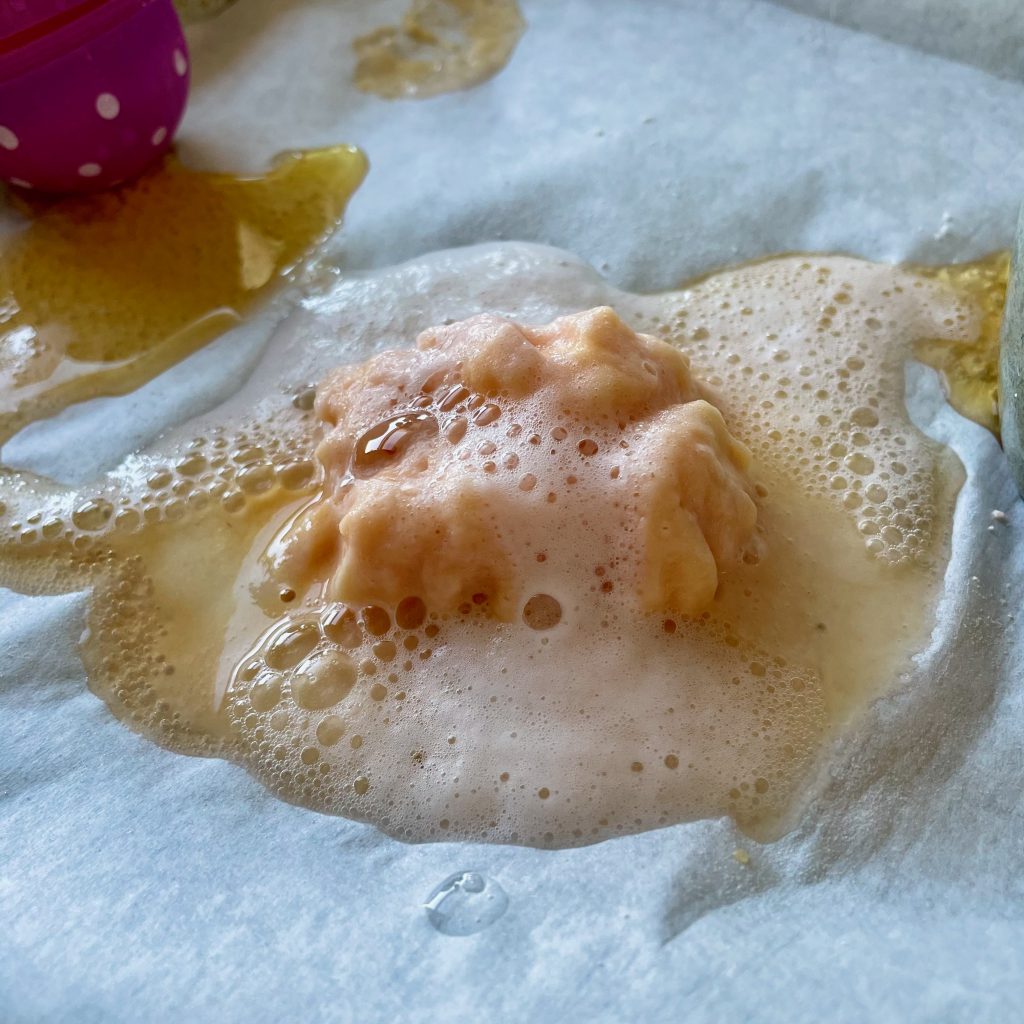Disclaimer: This page contains affiliate links. If you make a purchase from one of the links, Habitot will earn a small commission at no extra cost to you.
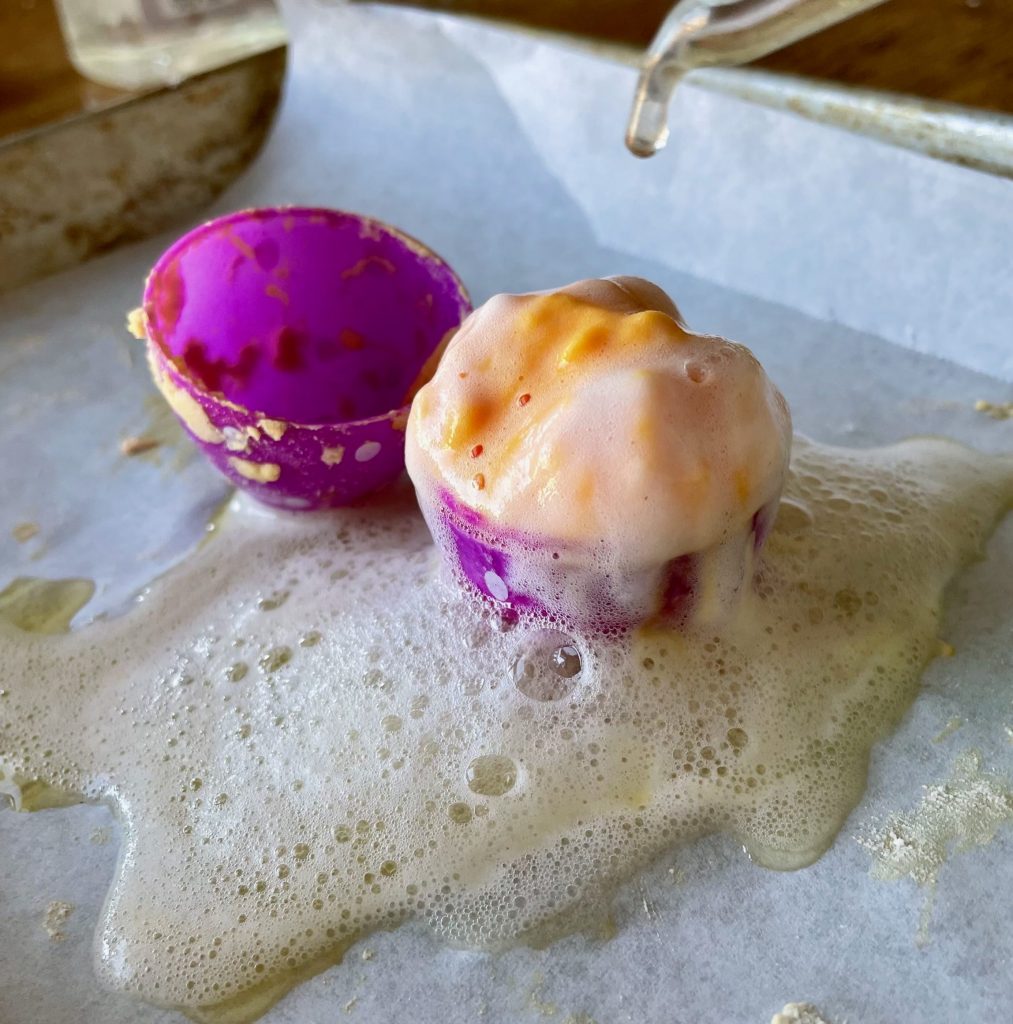
Throughout history, many cultures have used eggs to symbolize spring, new life, and rejuvenation. With this activity, your child will work on a fun and fizzling experiment while learning early chemistry skills!
SAFETY: Baking soda and vinegar are non-toxic, but please make sure children don’t put them in their mouths. Baking soda may cause minor skin irritation for those with sensitive skin.
What We’re Learning & Skills We’re Building
- Measurement – using a measuring cup to scoop baking soda into a bowl and measure out vinegar and water
- Fine motor skills – using the small muscles in the hand to mix, scoop, and squeeze
- Language & communication – learning words to describe observations
- Early chemistry – when mixed together, baking soda and vinegar create carbon dioxide
- Sensory awareness – using 4 of the 5 senses to observe and learn about the world
Materials
- Plastic eggs (found in grocery or department stores)
- 1 cup of baking soda
- Food coloring or washable, liquid watercolor paint
- ¼ cup of water
- Small bowl for mixing
- Spoon
- ¼ cup of white vinegar in a bowl
- Pipettes or medicine droppers
- Art tray or cooking tray (that can fit inside a freezer)
Optional Materials
- Whisk
- 1-2 tsp of dish soap
- Small, plastic figurines
- Parchment or wax paper
- ¼ cup of water for experimenting
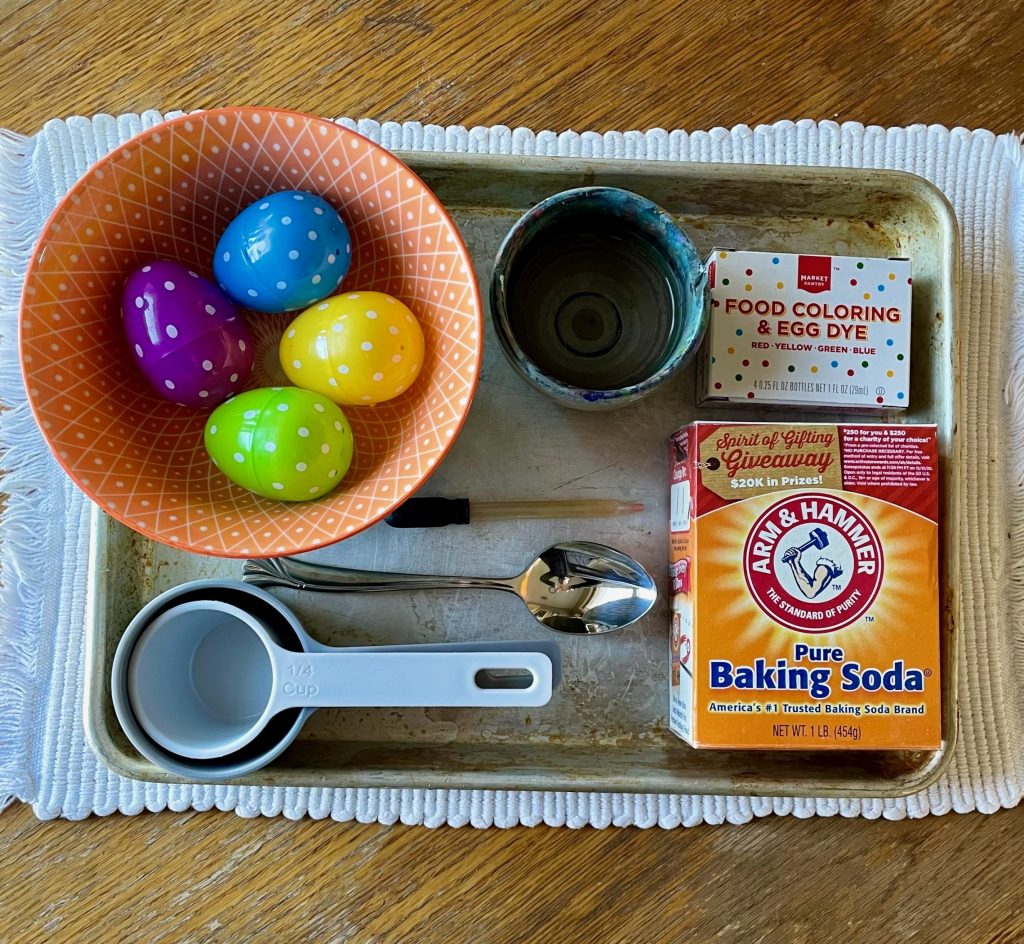
Setting Up
- Scoop or pour about 1 cup of baking soda into a mixing bowl. This should be enough to fill up 3 standard-size plastic eggs.
- Squeeze 3-4 drops of food coloring or watercolor paint into the baking soda. Mix it together with a spoon or a whisk until the color is mostly dispersed. (Optional: pour in about 1 tsp of dish soap to create a super bubbly reaction later in the experiment.)
- Add about ¼ of a cup of water into the colored baking soda and mix until it has a paste-like consistency. (It should be moldable and solid, not liquidy. Add more water if it’s too crumbly, or add more baking soda if it’s too liquidy.)
- Use the plastic eggs as a mold: use a spoon to scoop the mixture into one half of a plastic egg, making sure it’s filled to the top edge. (Optional: add a small plastic figurine by pushing it into the paste mixture.)
- Fill the other half of the egg with the paste, then close the egg shut. Repeat steps 4 & 5 to fill up more eggs.
- Now, carefully re-open the eggs to remove the egg-shaped paste.
- Place each egg shape of paste on a tray (lined with parchment paper, if you’d like more protection), then place the tray in the freezer for at least one hour. Overnight is also ok.
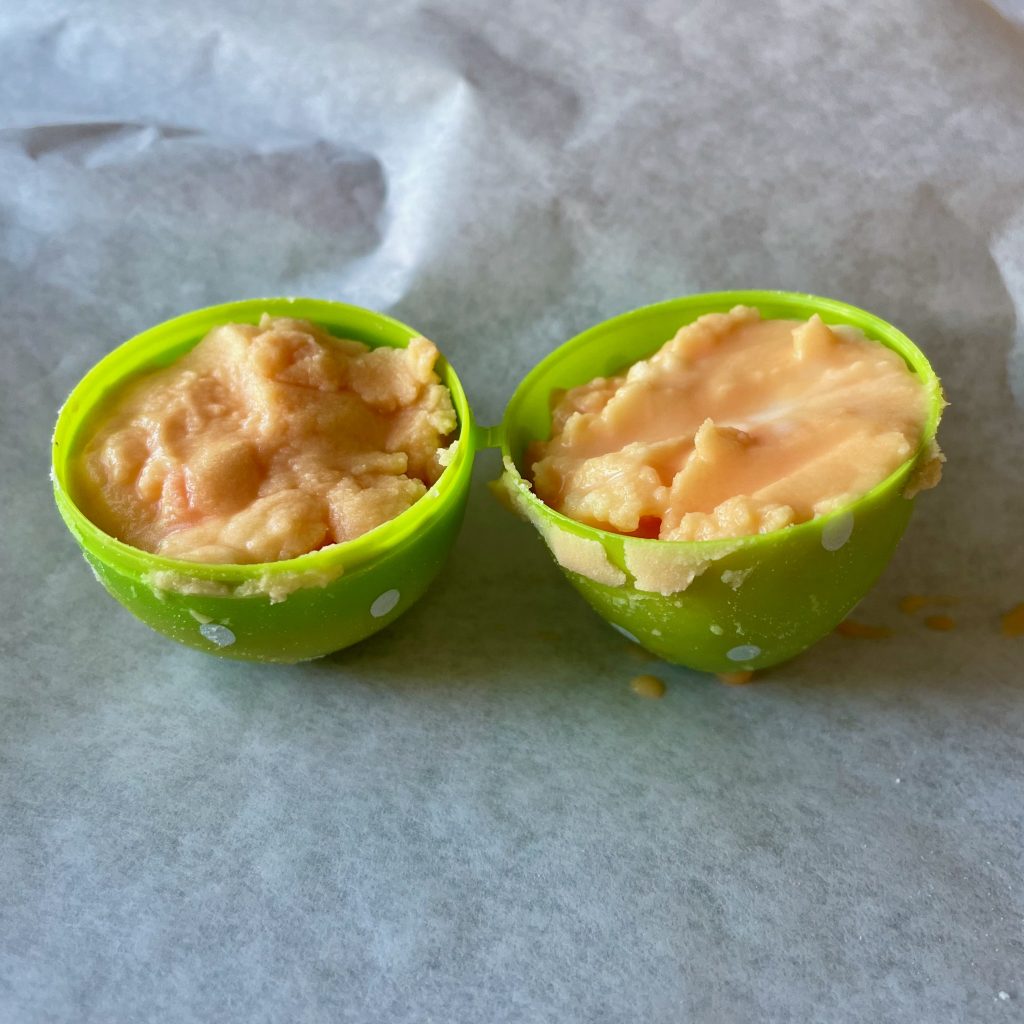
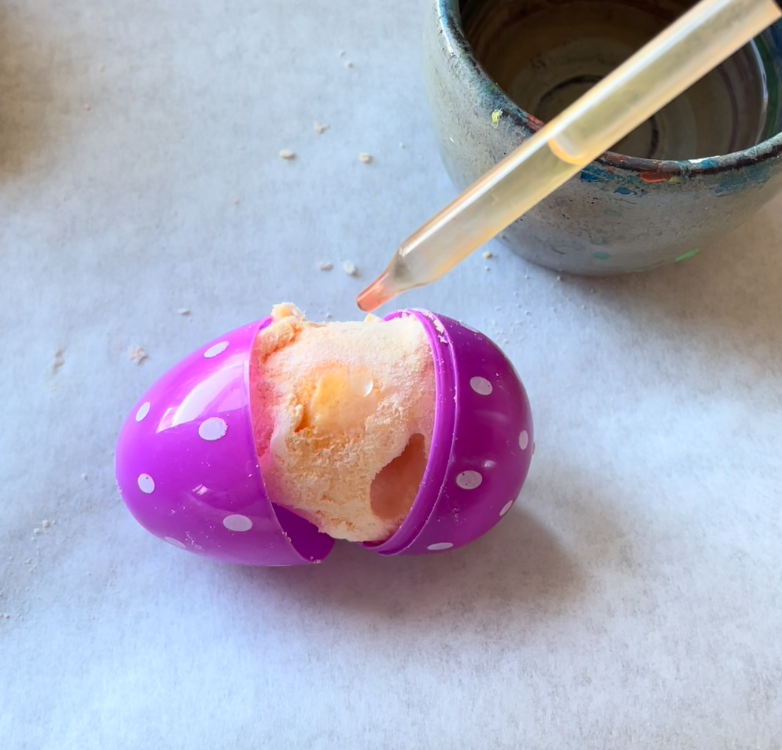
Experimenting & Observing Together
- Remove the “eggs” from the freezer, but keep them on the tray (you may want to place some of the frozen paste back into one half of a plastic egg). Encourage your child to use their senses and observe a frozen paste shape. Have them touch it gently. Ask, “How does it feel in your hands? Is it cold, warm, or hot? What consistency does it have? Is it smooth, crumbly, or coarse like sand? Does it look different now from how it looked before it was frozen?”
- Pour about ¼ of a cup of white vinegar into a small bowl and set it aside. You can also fill another bowl with about ¼ of a cup of water to experiment with later.
- Have your child describe what they observe about the vinegar. Ask, “What does it look like? Does it have a color? Is it similar in appearance to water? Does it smell different from water? What does it smell like?”
- Time to experiment! Using a pipette or a medicine dropper, squeeze up some vinegar (you may need to either model this for younger children or have them use a spoon to pour the vinegar.) Squeeze or pour the vinegar over the top of the paste. Ask, “What do you see happening?” Together, discuss what you see, hear, smell, and feel.
- Repeat step 4, this time squeezing water over the paste. Ask, “How does it compare to vinegar? Is the reaction the same or is it different? How so?”
Baking Soda and Vinegar – What’s Happening?
This colorful experiment lets children observe a safe chemical reaction. A chemical reaction is when two (or more) different substances interact and in the process, change into new substances. This happens at the molecular level. When vinegar is mixed with baking soda, the interaction creates two new substances: carbon dioxide (a safe gas) and water. After the reaction, the baking soda and the vinegar no longer exist as such, and the release of carbon dioxide gas produces all the bubbly fizzles. When dish soap is added to the baking soda paste, the fizzling and bubbling reaction is even stronger!
